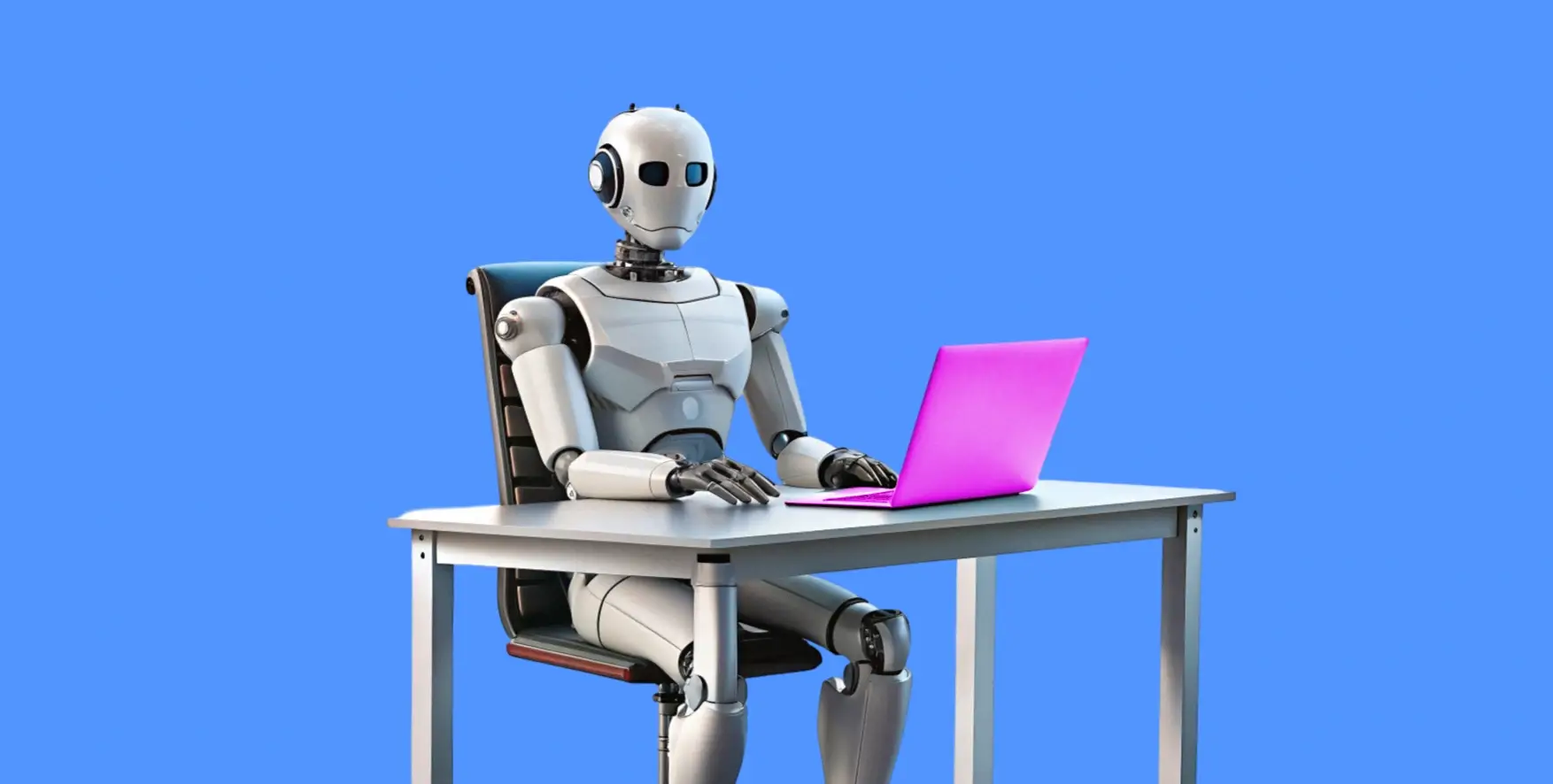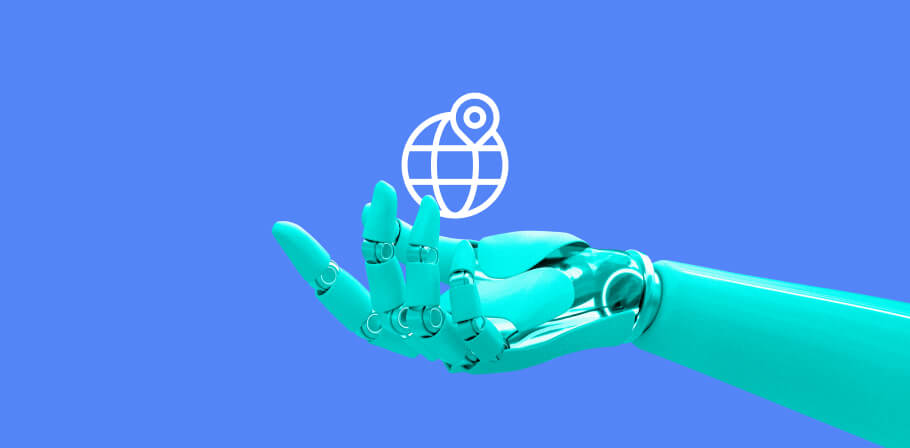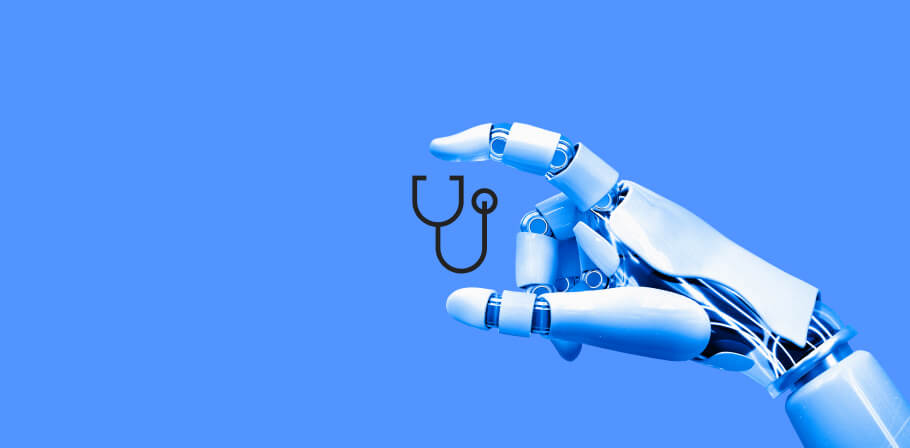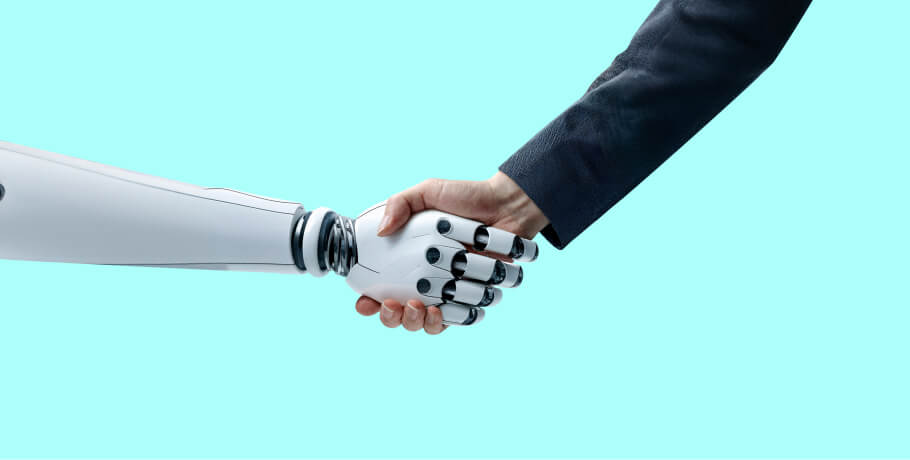In the rapidly evolving tech landscape, staying ahead of the competition requires leveraging the latest innovations. For CTOs, tech CEOs, delivery managers, and key decision-makers, integrating generative AI into your software development processes can be a game-changer.
The promise of gen AI for developer productivity lies in its ability to automate repetitive tasks, enhance code quality, and accelerate project timelines. Understanding how to harness this powerful technology is crucial for boosting your team's efficiency and delivering superior software solutions.
Implementing gen AI-assisted engineering can revolutionize your development workflow, enabling your team to focus on higher-level problem-solving and creativity. By incorporating generative AI tools, you can streamline code generation, debugging, and testing processes, ultimately driving more innovative and reliable software products.
As businesses strive for agility and excellence, adopting development practices enhanced by generative AI becomes a strategic imperative. This guide will explore practical steps and insights to help you navigate this transformative journey.
How developers are using generative AI to do more, faster
Generative AI is revolutionizing the way developers approach the software development lifecycle (SDLC). By automating repetitive and time-consuming tasks, AI is allowing developers to focus on more strategic and complex aspects of their projects.
For example, generative AI can automatically generate boilerplate code, debug existing codebases, and even suggest optimal solutions for coding problems. This not only accelerates development but also significantly reduces the margin for human error, resulting in higher-quality software. The use of generative AI in SDLC has become a pivotal strategy for teams looking to streamline their workflows and deliver products faster without compromising on quality.
The integration of generative AI models into daily operations has sparked a crucial discussion: will AI replace software engineers? While AI is undoubtedly transforming the field, its role is more about augmentation than replacement. These tools boost developer productivity by handling routine tasks, enabling engineers to concentrate on innovation and design.
Additionally, generative AI can assist in maintaining and updating legacy systems, providing real-time insights and recommendations that drive continuous improvement throughout the SDLC. Thus, rather than replacing engineers, generative AI empowers them to achieve more, enhancing overall productivity and fostering a more efficient and dynamic development environment.
ADOPT GENAI FOR SOFTWARE ENGINEERING IN 12 WEEKS
Enroll in our EngX GenAI Adoption Program and see your team’s productivity soar by up to 40%.
Examples of using GenAI in the development process
Code writing
Generative AI is making significant strides in software development by enhancing the code-writing process. Developers can leverage AI to generate source code quickly, allowing them to focus on more complex tasks. These tools provide coding suggestions that help developers write accurate and efficient code faster, minimizing the time spent on manual coding. By incorporating AI into the development workflow, teams can achieve faster turnaround times and higher-quality outputs, making it easier to meet tight deadlines and project requirements.
The ability to code quicker with the assistance of generative AI not only accelerates the development cycle but also ensures that the code is of high quality. AI-driven code generation tools can understand the context of the project and provide suggestions that align with best practices. This results in cleaner, more maintainable code that reduces the likelihood of bugs and errors. As developers adopt these technologies, they find that AI models complement their skills, leading to a more efficient and streamlined coding process.
Code documentation and explanation
Creating and maintaining documentation is a critical aspect of development, and generative AI is transforming this task. By leveraging natural language processing capabilities, AI can automatically generate comprehensive documentation that explains how the source code works. This not only saves developers time but also ensures that documentation is always up-to-date and accurate. AI-driven documentation tools use large language models to interpret code and produce detailed explanations, making it easier for developers to understand and work with complex codebases.
The integration of artificial intelligence into the documentation process enhances the overall development workflow. Developers can quickly access clear and concise explanations of code functionality, which facilitates better collaboration and knowledge sharing within teams. This is particularly beneficial for onboarding new team members or when transitioning projects between teams. By automating documentation tasks, generative AI enables developers to focus more on coding and problem-solving, ultimately leading to more efficient and productive development processes.
API integration
Integrating APIs is a crucial aspect of modern application development, and generative AI is streamlining this process for software engineers. AI models can automatically generate the necessary code for API integration, reducing the manual effort required and minimizing errors. This results in significant productivity gains, as developers can quickly and accurately connect their applications with external services. By automating API integration, AI ensures that developers can focus on building core functionality rather than dealing with the intricacies of connecting different systems.
The use of generative AI in API integration also enhances the overall reliability and performance of software applications. AI-driven tools can automatically test and validate API connections, ensuring that they function correctly and efficiently. This not only speeds up the process but also improves the quality of the final product. As developers embrace these AI tools, they can achieve more robust and reliable integrations, leading to better-performing applications and more satisfied users.
Logic implementation
Implementing business logic is a complex and time-consuming task, but generative AI is simplifying this process. AI can assist developers in creating and validating business logic by analyzing data and providing optimized solutions. These AI models can understand the requirements and constraints of a project, enabling them to generate efficient and accurate logic implementations. This helps developers to implement complex logic faster and with fewer errors, ultimately improving the quality and reliability of the software.
By leveraging AI to analyze data and generate logic, developers can achieve a more streamlined and efficient development process. AI models can provide real-time feedback and suggestions, helping developers to identify and resolve issues quickly. This not only speeds up the implementation process but also ensures that the logic is robust and scalable. As a result, developers can deliver high-quality software solutions that meet the needs of their users and stakeholders.
Unit test generation
Creating unit tests is an essential part of development, and generative AI is making this task easier and more efficient. AI models can automatically generate unit tests based on the existing code, ensuring comprehensive test coverage. By using machine learning algorithms, these tools can identify potential edge cases and generate tests that cover all possible scenarios. This not only saves developers time but also improves the overall quality and reliability of the software.
The ability to automatically write code for unit tests significantly enhances developer productivity. Developers can spend less time writing and maintaining tests and more time focusing on developing new features and improving existing functionality. AI-driven unit test generation also helps to identify and fix bugs early in the process, reducing the risk of issues arising in production. This leads to more stable and reliable software that meets the needs of users and stakeholders.
Programming language conversion
Converting code between different programming languages can be a daunting task, but AI tools for developer productivity are making it easier and more efficient. Generative AI can automatically translate code from one language to another, ensuring that the functionality and logic remain intact. This not only saves developers’ time but also reduces the risk of errors and inconsistencies that can occur during manual translation. By using AI-generated code, developers can quickly and accurately port applications to different platforms and environments.
The use of AI for programming language conversion enhances the overall flexibility and adaptability of software applications. Developers can easily switch between languages based on project requirements or preferences without having to rewrite large portions of code. This not only speeds up the development but also ensures that applications can be easily maintained and updated over time. By embracing AI models for code conversion, developers can achieve greater efficiency and productivity in their projects.
Code refactoring
Refactoring code is critical, and generative AI is revolutionizing this task. AI-driven tools can analyze existing codebases and provide code suggestions for improving structure, readability, and performance. By leveraging a generative AI model, developers can identify areas of code that need optimization and receive automated recommendations for refactoring. This not only saves time but also ensures that the code remains clean, maintainable, and efficient.
The use of generative AI for code refactoring enhances the overall quality and reliability of software applications. Developers can quickly and easily improve their codebases, reducing the risk of bugs and performance issues. By automating the refactoring process, generative AI enables developers to focus on higher-level tasks, such as designing new features and improving user experiences. This leads to more robust and scalable software solutions that meet the needs of users and stakeholders.
Synthesizing data
Data synthesis is a critical component of modern development, and genAI in software engineering is playing a pivotal role in this area. Generative AI can automatically generate synthetic data sets that mimic real-world data, enabling developers to test and validate their applications under various scenarios. This not only saves time and resources but also ensures that the software performs reliably in production environments. Forward-thinking organizations are leveraging AI to synthesize data, driving more accurate and efficient development processes.
The use of generative AI for data synthesis also enhances the overall quality and robustness of software applications. By generating realistic data sets, developers can identify and address potential issues early during development. This leads to more reliable and scalable software solutions that meet the needs of users and stakeholders. As development continues to evolve, the ability to synthesize data with AI will become increasingly important for achieving high-quality and efficient development outcomes.
Troubleshooting
Troubleshooting is an essential aspect of the process, and AI assistants are transforming how teams approach this task. By leveraging AI, developers can quickly identify and resolve issues in their code, improving overall efficiency and reducing downtime. AI-driven tools can automatically analyze code and pull requests, providing real-time feedback and suggestions for fixing bugs and optimizing performance. This not only saves time but also ensures that issues are resolved accurately and effectively.
The use of AI for troubleshooting enhances the overall productivity and effectiveness of development professionals. By automating the identification and resolution of issues, AI assistants enable developers to focus on higher-level tasks and deliver higher-quality software solutions. This leads to more reliable and scalable applications that meet the needs of users and stakeholders. As development teams continue to adopt AI-driven troubleshooting tools, they will achieve greater efficiency and productivity in their projects.
Code reviewing
Code reviews are a critical part of ensuring the quality and security of new code, and generative AI proves to be useful in this process too. AI-driven tools can automatically analyze code for security vulnerabilities and provide alternative solutions for optimizing performance. This not only saves time but also ensures that code is reviewed thoroughly and accurately. By leveraging AI, teams can identify and address potential issues early in development, improving the overall quality and reliability of their software.
The use of AI for code reviewing enhances overall productivity and effectiveness. By automating the review process, AI models enable developers to focus on higher-level tasks, such as designing new features and improving user experiences. This leads to more robust and scalable software solutions that meet the needs of users and stakeholders. As professionals continue to adopt AI-driven code review tools, they will achieve greater efficiency and productivity in their projects.
LEVERAGE THE POWER OF GENAI SAFELY WITH EPAM ENGX
Harness the power of generative AI in your software development processes safely with our expertly designed genAI-assisted engineering framework.
Popular genAI tools boosting developer productivity
ChatGPT
ChatGPT, an AI-powered tool, utilizes generative AI to assist developers by providing intelligent code recommendations and debugging assistance. Its ability to understand natural language queries and generate source code snippets within a context window makes it a valuable asset for developers. This tool enhances productivity by offering real-time solutions and explanations, enabling developers to resolve issues more efficiently and focus on more complex tasks.
Claude
Claude is an AI assistant designed for software development specifically, leveraging natural language prompts to interact with developers. This tool can perform a variety of tasks, from generating code to executing commands directly from the command line. Claude's ability to understand and respond to complex prompts makes it a versatile assistant that streamlines development processes and enhances overall productivity.
GitHub Copilot
GitHub Copilot revolutionizes the way developers write code by leveraging deep learning techniques to provide intelligent and context-aware code suggestions. Integrated seamlessly into popular integrated development environments (IDEs), GitHub Copilot acts as a virtual pair programmer, offering real-time assistance and reducing the cognitive load on developers.
By understanding the context of the project, GitHub Copilot can suggest entire lines or blocks of code, helping developers write code faster and with fewer errors. As a result, GitHub Copilot not only accelerates development but also improves code quality, making it an invaluable tool for developers looking to enhance their productivity.
The power of GitHub Copilot lies in its ability to learn from a vast amount of publicly available code and documentation. With that, GitHub Copilot is continuously improving its suggestions through deep learning algorithms.
As developers type, GitHub Copilot provides instant code completions and even suggests alternative solutions to coding problems. This level of integration within the integrated development environment ensures that developers can maintain their workflow without interruption, allowing them to focus on more complex and creative aspects of development. By utilizing GitHub Copilot, developers can achieve greater efficiency, reduce the time spent on routine tasks, and ultimately deliver high-quality software more rapidly.
Codeium
Codeium utilizes a powerful AI model trained on vast amounts of training data to enhance the coding process. It focuses on improving user satisfaction by integrating customer feedback into its development cycle. Codeium provides intelligent code recommendations and completions, helping developers write cleaner and more efficient code while enhancing their overall productivity and experience.
AskCodi
AskCodi is designed to elevate the developer experience by providing intelligent code suggestions and debugging assistance. It understands natural language queries and offers relevant solutions, making it easier for developers to tackle complex problems. AskCodi's focus on enhancing the coding workflow ensures that developers can work more efficiently and effectively, leading to better project outcomes.
AlphaCode
AlphaCode leverages advanced pattern recognition algorithms to assist developers in writing and optimizing code. By analyzing code patterns and providing intelligent suggestions, AlphaCode helps developers identify and implement best practices, resulting in more efficient and maintainable code. This tool's ability to recognize and adapt to various coding patterns makes it a valuable asset for any development team.
Tabnine
Tabnine acts as a pair programmer by providing AI-generated code completions and suggestions. This tool integrates seamlessly into the developer's workflow, offering real-time assistance that improves coding speed and accuracy. By leveraging Tabnine's capabilities, developers can focus on higher-level tasks and reduce the time spent on routine coding activities, ultimately enhancing productivity.
Amazon CodeWhisperer
Amazon CodeWhisperer uses a sophisticated generative AI model to process unstructured data and provide intelligent code recommendations. This tool helps developers by offering real-time assistance and recommendations, making it easier to navigate complex coding challenges. CodeWhisperer's ability to understand and generate code based on unstructured data inputs ensures that developers can work more efficiently and effectively.
Adopt genAI in your software development with our EngX Program
Boost your software engineering teams' efficiency by up to 42% with EPAM's EngX GenAI Adoption Program. Our comprehensive toolkit includes over 10 cutting-edge AI platforms designed to enhance productivity for businesses of all sizes.
By leveraging generative AI models and advanced machine learning techniques, our program empowers your teams to tackle complex projects with ease. From integrating open-source code to automating repetitive tasks, our solutions streamline your development, enabling your engineers to focus on innovation and strategic initiatives.
Partner with EPAM Startups and embark on your AI-assisted engineering journey today. Our EngX Program is tailored to support the unique needs of your business, providing the tools and expertise necessary to navigate the world of nascent technology.
With our guidance, your teams will harness the full potential of generative AI, transforming your development capabilities and driving unprecedented efficiency. Join us and experience the future of engineering — start your journey with the EngX Program now.
What’s the future of generative AI in software development?
The future of generative artificial intelligence in development looks promising, with its potential to revolutionize how developers create and maintain software. As generative AI models continue to evolve, they will increasingly handle more complex tasks, from generating entire functions to optimizing performance and scalability.
This shift will significantly impact the roles of developers, particularly as tools become adept at AI frontend development, allowing teams to streamline their workflows and focus on higher-level problem-solving and innovation. One of the most exciting aspects of this nascent technology is its ability to integrate seamlessly into the development pipeline. For instance, generative AI can automatically analyze a pull request, providing suggestions and identifying potential issues before code is merged.
The use of natural language prompts will further simplify interactions with AI, making them more accessible to developers of all skill levels. Additionally, the ability to process vast amounts of open-source code and customer feedback will enable generative AI to continually improve and adapt, ensuring it remains a valuable asset in software development.As generative AI becomes more sophisticated, the need to hire full-stack developers might evolve, with a greater emphasis on understanding how to leverage AI solutions effectively. Machine learning algorithms will refine the context window to provide more accurate and relevant suggestions, enhancing the developer's productivity and code quality. In the future, generative AI will not only augment the process but will also foster a more collaborative and efficient environment, transforming how software is built and maintained.
Conclusion
The integration of generative AI for developer productivity is no longer a futuristic concept but a present-day reality that is transforming development. By automating routine tasks, providing intelligent code-writing assistance, and enhancing overall workflow efficiency, generative AI solutions are enabling teams to achieve more in less time.
As businesses continue to adopt these technologies, the role of developers evolves, focusing more on innovation and strategic problem-solving. Embracing generative AI not only boosts productivity but also positions companies at the forefront of technological advancements, ready to meet the demands of an ever-changing digital landscape.
EPAM Startups can help your company harness the power of generative AI by providing the talent and the genAI adoption framework you need to succeed. Whether you need to hire on-demand developers or hire Angular developers, our team of experts is ready to support your AI initiatives.
Partner with EPAM Startups to ensure you have the right skills and expertise to leverage generative AI effectively and drive your business forward.

Expert digital communicator and editor providing insights and research-based guides for technology buyers globally.
Expert digital communicator and editor providing insights and research-based guides for technology buyers globally.
Explore our Editorial Policy to learn more about our standards for content creation.
read more














